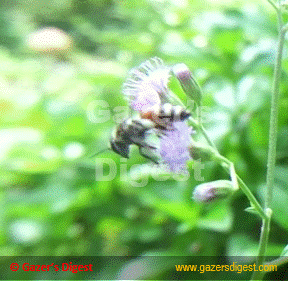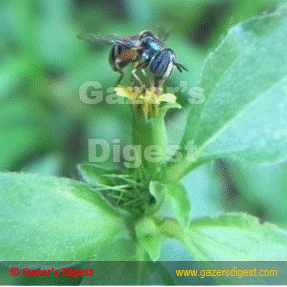
HONEY: A NATURAL MEDICINAL AGENT !
May 10, 2022

Honeybees are social insects. They live together as a colony. Honeybees collect both pollen and nectar from flowers, and during this collection process bees pollinate the plants. The nectar sucked by a honeybee is kept in a special stomach which is used to transfer nectar to the hive. Honeybees form honey from the nectar of flowers. Honey, in other words, processed nectar is a natural product. Pollen in honey is used to determine the source of the honey.
Since ancient times, honey—a sweet, sticky, yellow substance made by bees—has been known as a vital medicinal agent. It has been used, since ancient times, for medicinal purposes. Honey is one of the oldest sweeteners. Honey, has also been used for food.

Honey isn't considered generally safe for children less than 1 year. Honey may cause infant botulism–-a rare, a serious disease that affects babies under the age of 1 year1.
Honey is mainly comprised of carbohydrates (82%). Honey also contains proteins, amino acids, vitamins (riboflavin, niacin, folic acid, pantothenic acid, vitamin B6, and vitamin C), minerals (calcium, iron, zinc, potassium, phosphorous, magnesium, selenium, chromium, and manganese), antioxidants (flavonoids, ascorbic acid, catalase, and selenium), organic acids (acetic, butanoic, formic, citric, succinic, lactic, malic, pyroglutamic, gluconic acids and aromatic acids) and hydroxymethylfurfural2.

Honey made by honeybees is superior to artificial honey made from sugars. Artificial honey fails to include glucose oxidase, hydrogen peroxide, flavonoids, and other minor constituents of honey2.
Raw honey does not have an official or legal definition3. We can assume that raw honey isn't either heated or filtered.
Honey has been used to treat throat infections, constipation, fatigue, wounds, and a wide variety of other ailments. Studies suggest that the ingredients of honey might offer antibacterial, anti-inflammatory, antidepressant, anti-anxiety, and antioxidant benefits.

In addition to direct antibacterial action, honey boosts the immune system to clear infection4.
Honey reduces cough frequency, severity, and symptoms, particularly in children older than 12 months5,6.
Honey is made up of many unique qualities that improve wound healing. Its water content is low. The viscosity of honey is high, and therefore honey prevents infection and cross- contamination. The acidity of honey also helps to destroy bacteria. Most bacteria are unable to grow in honey as its pH is between 3.6-3.7. Hydrogen peroxide, an antibacterial component, is present in honey7.

In the past, there has been a tendency to take into account any honey being a sample of all honey. As a result of this tendency, significant variations can be seen in the findings reported4.
The images were captured as it was found happening in nature, and not enhanced using software. Images may be subject to copyright.
- Purdue Extension FoodLink. Honey
- School of Chemistry, University of Bristol UK. The Chemistry of Bees.
- Ostiguy N. (2019). What is raw honey? Retrieved from https://bee-health.extension.org/what-is-raw-honey/
- Molan, P. (2001). Why honey is effective as a medicine. 2. The scientific explanation of its effects. Bee World, 82(1), 22-40.
- Chaplin S. (2021). Is honey effective for upper respiratory tract infection?. Prescriber Volume 32(8), 29-31.
- Goldman R. D. (2014). Honey for treatment of cough in children. Canadian family physician Medecin de famille canadien, 60(12), 1107–1110.
- Bernstein, R. C. (2013). The Scientific Evidence Validating The Use of Honey as a Medicinal Agent. The Science Journal of the Lander College of Arts and Sciences, 6(2). Retrieved from https://touroscholar.touro.edu/sjlcas/vol6/iss2/6

Home | Contact: info@gazersdigest.com
© 2020-2025 Gazer’s Digest is an information sharing platform. Gazer’s Digest includes topics, thought to be useful for the readers.